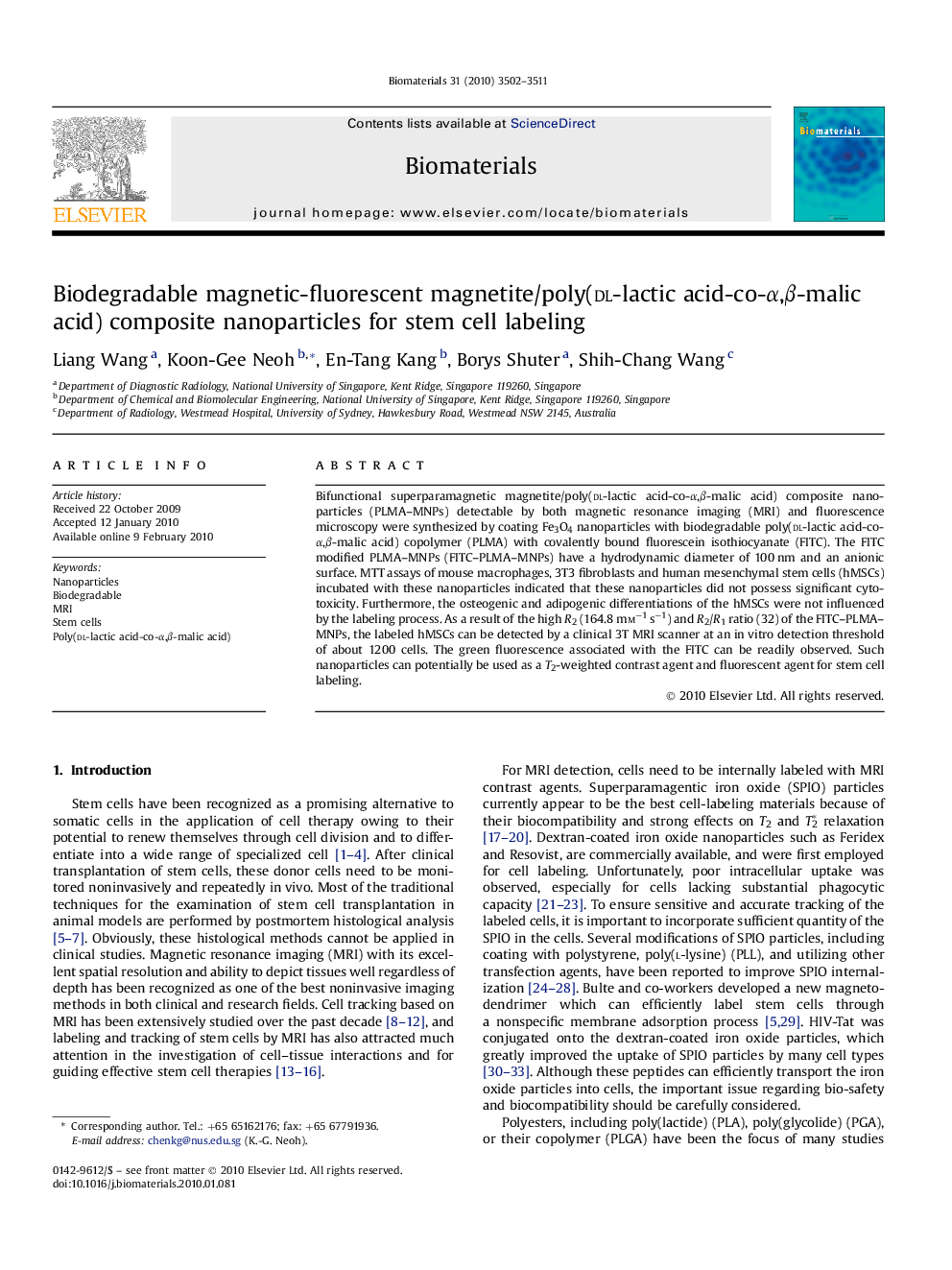| Article ID | Journal | Published Year | Pages | File Type |
|---|---|---|---|---|
| 9702 | Biomaterials | 2010 | 10 Pages |
Bifunctional superparamagnetic magnetite/poly(dl-lactic acid-co-α,β-malic acid) composite nanoparticles (PLMA–MNPs) detectable by both magnetic resonance imaging (MRI) and fluorescence microscopy were synthesized by coating Fe3O4 nanoparticles with biodegradable poly(dl-lactic acid-co-α,β-malic acid) copolymer (PLMA) with covalently bound fluorescein isothiocyanate (FITC). The FITC modified PLMA–MNPs (FITC–PLMA–MNPs) have a hydrodynamic diameter of 100 nm and an anionic surface. MTT assays of mouse macrophages, 3T3 fibroblasts and human mesenchymal stem cells (hMSCs) incubated with these nanoparticles indicated that these nanoparticles did not possess significant cytotoxicity. Furthermore, the osteogenic and adipogenic differentiations of the hMSCs were not influenced by the labeling process. As a result of the high R2 (164.8 mm−1 s−1) and R2/R1 ratio (32) of the FITC–PLMA–MNPs, the labeled hMSCs can be detected by a clinical 3T MRI scanner at an in vitro detection threshold of about 1200 cells. The green fluorescence associated with the FITC can be readily observed. Such nanoparticles can potentially be used as a T2-weighted contrast agent and fluorescent agent for stem cell labeling.
